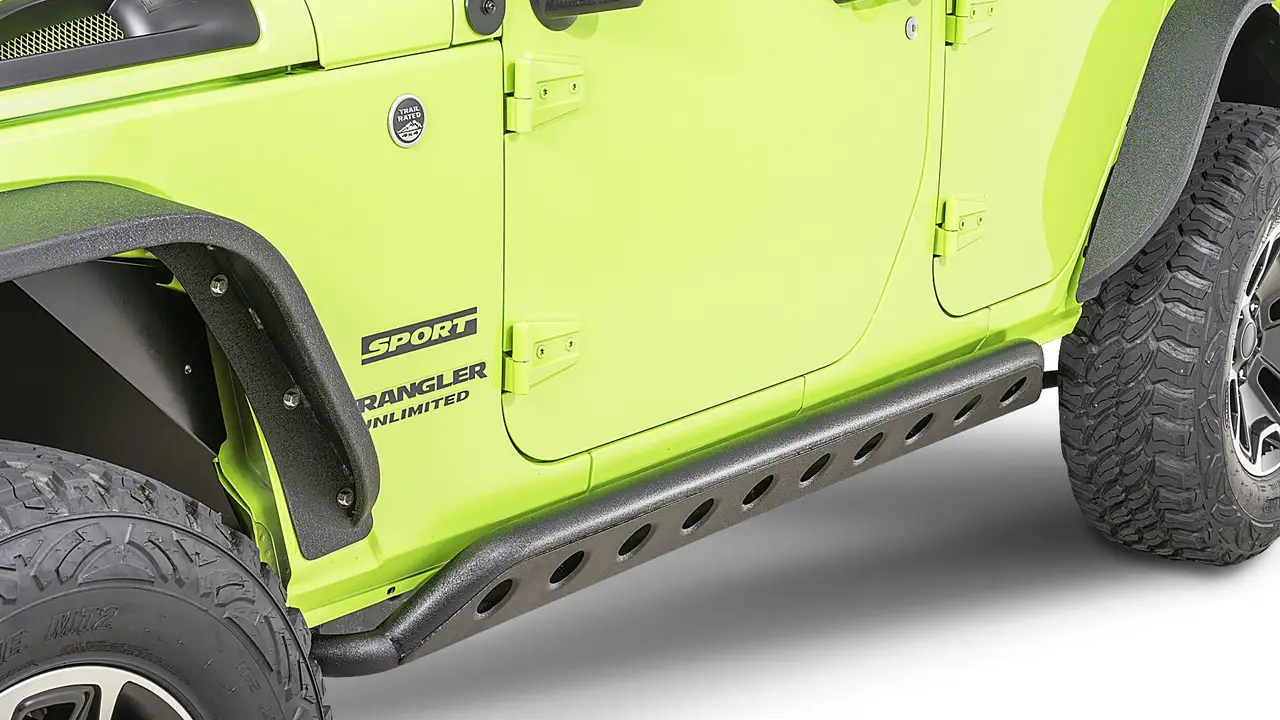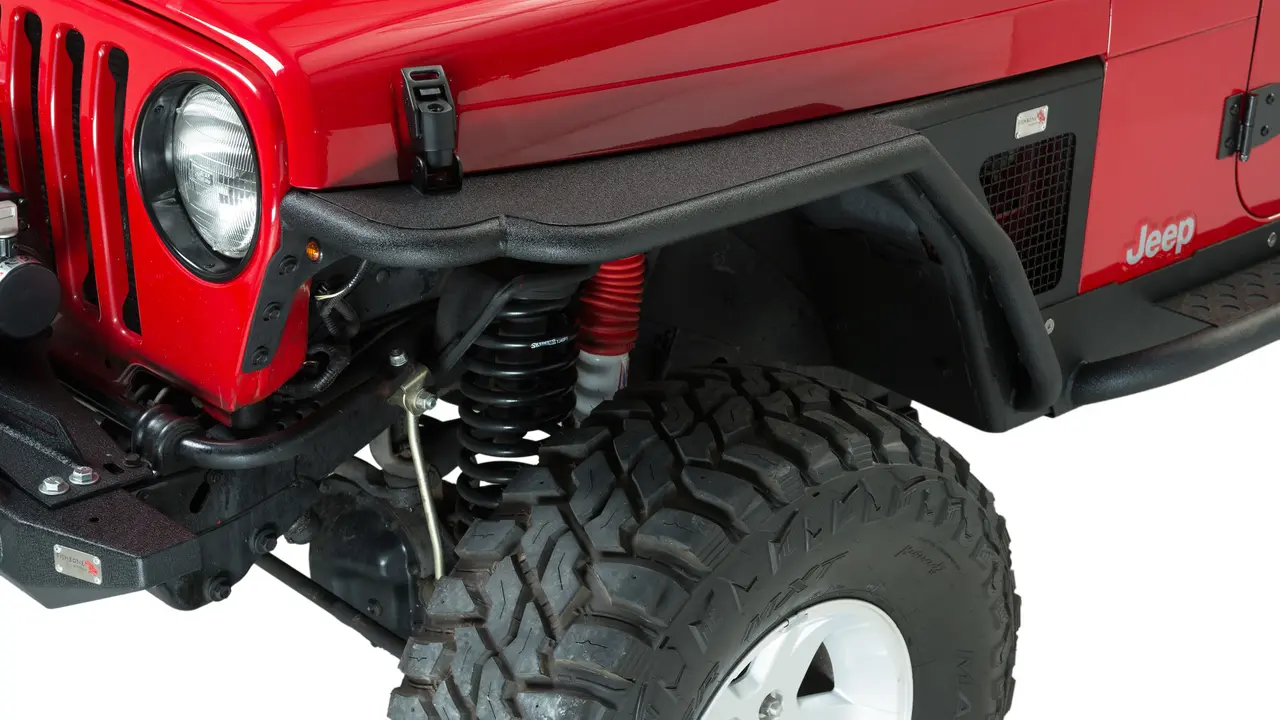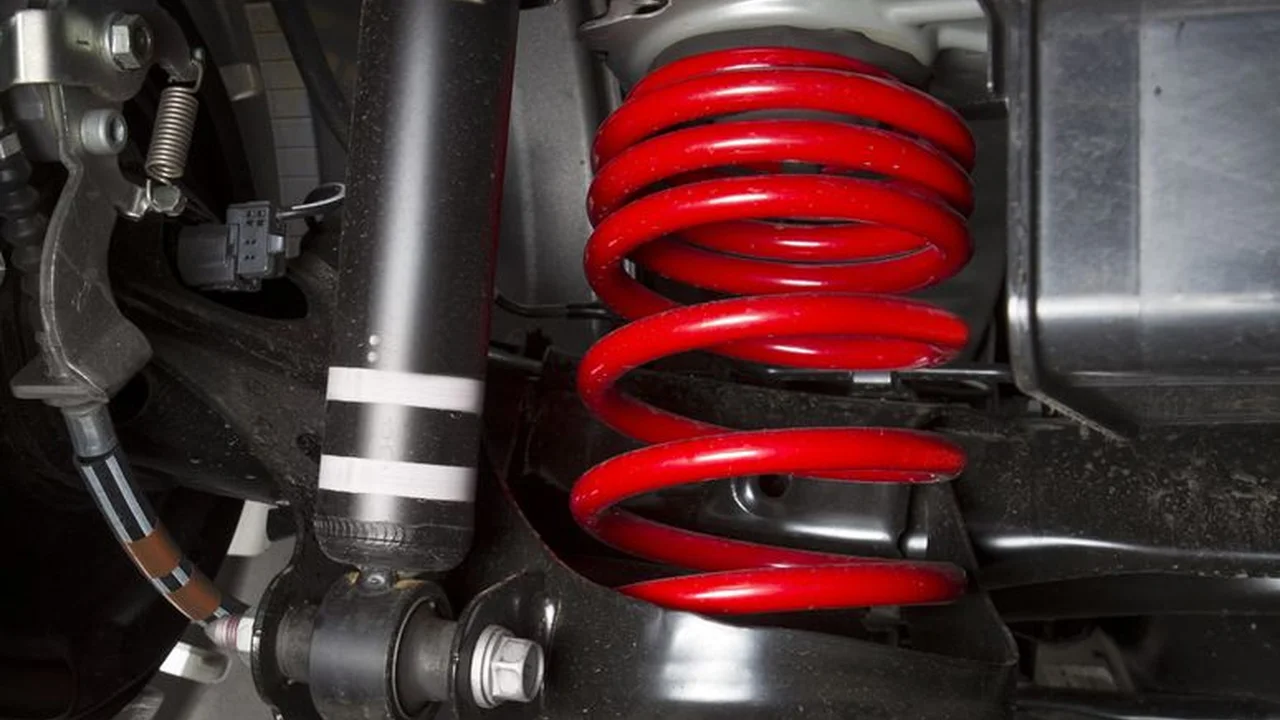7 Best Rock Sliders for Jeeps & Trucks: Review & Comparison

Protect your vehicle from rocks and obstacles with rock sliders. We review and compare the 7 best rock sliders for Jeeps and trucks. Find the perfect sliders for your needs and conquer challenging trails. Enhance your off-road adventures with our expert recommendations.
Understanding Rock Sliders What Are They and Why Do You Need Them Jeep Rock Slider Truck Rock Slider
Okay, let's talk rock sliders. If you're serious about off-roading, you've probably heard of them. But what exactly are they, and why should you slap a pair on your Jeep or truck? Simply put, rock sliders are protective bars or tubes that mount along the sides of your vehicle, just below the doors. They act as a shield, preventing rocks, trees, and other trail hazards from damaging your vulnerable rocker panels – that area between your wheels and under your doors. Think of them as tough side-steps with a serious attitude problem when it comes to protecting your rig.
Why do you need them? Well, if you're sticking to paved roads, you probably don't. But if you're venturing off the beaten path, especially on rocky or challenging trails, rock sliders are essential. Without them, one wrong move could leave you with dented, scratched, or even crushed rocker panels. Repairs can be expensive, and even worse, damage can compromise the structural integrity of your vehicle. Rock sliders are a relatively inexpensive insurance policy against trail carnage.
Factors to Consider When Choosing Rock Sliders Rock Slider Buying Guide
So, you're sold on the idea of rock sliders. Great! But before you rush out and buy the first set you see, there are a few things to consider:
- Material: Rock sliders are typically made from steel or aluminum. Steel is stronger and more durable, making it the go-to choice for serious rock crawling. Aluminum is lighter, which can be beneficial for fuel economy and overall vehicle weight. However, aluminum sliders are generally not as strong as steel and are better suited for lighter off-roading.
- Mounting Style: Rock sliders can be bolt-on or weld-on. Bolt-on sliders are easier to install and remove, making them a good option for beginners. Weld-on sliders are more secure and offer better protection, but require welding skills or professional installation.
- Design and Coverage: Rock sliders come in various designs, from simple tubes to more complex structures with integrated steps or kick-outs. Consider the type of off-roading you'll be doing and choose a design that provides adequate coverage for your rocker panels.
- Vehicle Compatibility: Make sure the rock sliders you choose are specifically designed for your make and model of vehicle. Universal sliders may require modification to fit properly, which can compromise their strength and effectiveness.
- Price: Rock sliders range in price from a few hundred dollars to over a thousand. Set a budget and stick to it, but don't skimp on quality. A good set of rock sliders is an investment that will protect your vehicle for years to come.
Top 7 Rock Sliders Review and Comparison Best Rock Sliders Jeep Truck
Alright, let's get down to business. Here's our list of the 7 best rock sliders for Jeeps and trucks, based on our research and testing:
- Body Armor 4x4 Hiline Rock Sliders (Jeep Wrangler JL/JT): These sliders offer excellent protection and a sleek, low-profile design. They're made from heavy-duty steel and feature a durable textured black powder coat finish. They bolt directly to the frame for easy installation.
- Pros: Excellent protection, sleek design, easy installation.
- Cons: Can be pricey.
- Price: Around $600-$800.
- Best Use: General off-roading and rock crawling.
- N-Fab Nerf Steps (Trucks): While technically nerf bars, these offer decent protection from smaller rocks and debris, plus they provide a convenient step for getting in and out of your truck. They're available in various finishes and styles.
- Pros: Affordable, provide a step, stylish.
- Cons: Not as strong as dedicated rock sliders.
- Price: Around $300-$500.
- Best Use: Light off-roading and daily driving.
- Rock Hard 4x4 Patriot Series Rock Sliders (Jeep Wrangler JK/JL): These sliders are built like a tank, offering maximum protection for serious rock crawling. They're made from thick-walled steel tubing and feature a durable powder coat finish. Available in bolt-on and weld-on versions.
- Pros: Extremely strong, excellent protection.
- Cons: Can be expensive, weld-on version requires professional installation.
- Price: Around $700-$1000.
- Best Use: Extreme rock crawling.
- Smittybilt XRC Rock Sliders (Jeep Wrangler TJ/JK/JL, Trucks): Smittybilt is a well-known brand in the off-road world, and their XRC rock sliders are a popular choice for good reason. They offer a good balance of protection, affordability, and style. Made from durable steel tubing and feature a textured black powder coat finish.
- Pros: Affordable, good protection, stylish.
- Cons: Not as strong as some other options.
- Price: Around $400-$600.
- Best Use: General off-roading and moderate rock crawling.
- ARB Rock Sliders (Trucks and SUVs): ARB is another reputable brand known for its high-quality off-road accessories. Their rock sliders are designed to provide maximum protection and durability. They're made from heavy-duty steel and feature a vehicle-specific design for a perfect fit.
- Pros: Excellent protection, durable, vehicle-specific design.
- Cons: Can be expensive.
- Price: Around $800-$1200.
- Best Use: Serious off-roading and overlanding.
- Metalcloak Overline Rock Sliders (Jeep Wrangler JK/JL): These sliders are unique in that they offer extended coverage, protecting not only the rocker panels but also the lower portion of the fenders. They're made from durable steel and feature a textured black powder coat finish.
- Pros: Extended coverage, excellent protection, stylish.
- Cons: Can be pricey.
- Price: Around $900-$1300.
- Best Use: Rock crawling and extreme off-roading where maximum protection is needed.
- White Knuckle Off Road Products Rock Sliders (Trucks and SUVs): White Knuckle Off Road Products specializes in heavy-duty rock sliders for a variety of trucks and SUVs. Their sliders are known for their strength and durability. They're made from thick-walled steel tubing and feature a durable powder coat finish.
- Pros: Extremely strong, excellent protection, custom options available.
- Cons: Can be expensive, longer lead times for custom orders.
- Price: Around $700-$1100 (depending on options).
- Best Use: Extreme off-roading and rock crawling.
Real-World Scenarios Using Rock Sliders Off-Road Adventures
Imagine this: You're navigating a tight, rocky trail in Moab, Utah. The terrain is unforgiving, and sharp rocks jut out from every angle. Without rock sliders, your rocker panels would be taking a beating. But with a set of Rock Hard 4x4 Patriot Series sliders, you can confidently maneuver your Jeep over the obstacles, knowing that your vehicle is protected.
Or perhaps you're overlanding through the forests of the Pacific Northwest. A fallen log blocks your path. Instead of trying to find a way around, you can simply drive over it, using your ARB rock sliders to protect your vehicle from damage.
These are just a couple of examples of how rock sliders can enhance your off-road adventures. They provide peace of mind, allowing you to focus on the trail ahead without worrying about damaging your vehicle.
Installing Rock Sliders DIY vs Professional Installation Rock Slider Installation
Installing rock sliders can be a DIY project, especially if you choose bolt-on sliders. However, it's important to have the right tools and some mechanical experience. Here's a general overview of the installation process:
- Gather your tools: You'll need a socket set, wrenches, a torque wrench, and possibly a drill and some drill bits.
- Prepare your vehicle: Park your vehicle on a level surface and engage the parking brake.
- Remove any existing side steps or running boards: If your vehicle has side steps or running boards, you'll need to remove them before installing the rock sliders.
- Install the rock sliders: Follow the manufacturer's instructions to bolt the rock sliders to the frame of your vehicle. Make sure all bolts are properly torqued.
If you're not comfortable installing rock sliders yourself, or if you choose weld-on sliders, it's best to have them professionally installed. A qualified mechanic or off-road shop will have the necessary tools and experience to ensure a proper and safe installation.
Maintaining Your Rock Sliders Keeping Them in Top Shape Rock Slider Maintenance
To keep your rock sliders in top shape, it's important to maintain them properly. Here are a few tips:
- Inspect them regularly: Check for any signs of damage, such as dents, cracks, or rust.
- Clean them: Wash your rock sliders regularly with soap and water to remove dirt and debris.
- Touch up any scratches or chips: If you notice any scratches or chips in the powder coat finish, touch them up with paint to prevent rust.
- Tighten the bolts: Periodically check the bolts to make sure they're properly torqued.
Steel vs Aluminum Rock Sliders A Detailed Comparison Rock Slider Material
Let's dig a bit deeper into the material differences. Steel is the traditional choice for rock sliders. It's incredibly strong and can withstand serious abuse. If you plan on tackling challenging rock crawling trails, steel is the way to go. However, steel is also heavier than aluminum, which can impact your vehicle's fuel economy and overall performance. Steel sliders are also more susceptible to rust, so proper maintenance is crucial.
Aluminum rock sliders are a lighter alternative. They won't weigh your vehicle down as much, and they're more resistant to corrosion. However, aluminum is not as strong as steel, so aluminum sliders are better suited for lighter off-roading. They're a good option if you want some extra protection without adding a lot of weight.
Here's a quick comparison table:
| Feature | Steel Rock Sliders | Aluminum Rock Sliders |
|---|---|---|
| Strength | High | Moderate |
| Weight | High | Low |
| Corrosion Resistance | Low | High |
| Price | Moderate to High | Moderate to High |
| Best Use | Serious rock crawling | Light off-roading |
Bolt-On vs Weld-On Rock Sliders Pros and Cons Rock Slider Mounting
Bolt-on rock sliders are exactly what they sound like: they bolt directly to your vehicle's frame. This makes them relatively easy to install, even for beginners. You don't need any special tools or skills, just a socket set and a torque wrench. Bolt-on sliders are also easy to remove if you ever need to. However, bolt-on sliders may not be as strong as weld-on sliders, as the bolts can be a point of weakness. They may also require drilling into your vehicle's frame.
Weld-on rock sliders are welded directly to your vehicle's frame. This creates a much stronger and more secure connection. Weld-on sliders are the preferred choice for serious off-roaders who demand the ultimate in protection. However, weld-on sliders require welding skills or professional installation. They're also more difficult to remove if you ever need to.
Here's a quick comparison table:
| Feature | Bolt-On Rock Sliders | Weld-On Rock Sliders |
|---|---|---|
| Installation | Easy | Difficult |
| Strength | Moderate | High |
| Removal | Easy | Difficult |
| Cost | Moderate | Moderate to High |
| Best Use | General off-roading | Serious off-roading |
Rock Slider Design and Coverage Choosing the Right Style Rock Slider Types
Rock sliders come in various designs, from simple tubes to more complex structures with integrated steps or kick-outs. The design you choose will depend on your personal preferences and the type of off-roading you'll be doing.
- Tube sliders: These are the simplest type of rock slider, consisting of a single tube that runs along the side of your vehicle. They offer basic protection and are a good option for light off-roading.
- Step sliders: These sliders incorporate a step, making it easier to get in and out of your vehicle. They're a good option for daily drivers who also want some extra protection.
- Kick-out sliders: These sliders have a small "kick-out" at the rear, which helps to push your vehicle away from obstacles. They're a good option for rock crawling and tight trails.
- Full-coverage sliders: These sliders offer the most comprehensive protection, covering the entire rocker panel and even extending up to the fenders. They're a good option for extreme off-roading.
Consider the type of off-roading you'll be doing and choose a design that provides adequate coverage for your rocker panels. Also, think about whether you want a step or a kick-out. Ultimately, the best design is the one that meets your specific needs and preferences.
:max_bytes(150000):strip_icc()/277019-baked-pork-chops-with-cream-of-mushroom-soup-DDMFS-beauty-4x3-BG-7505-5762b731cf30447d9cbbbbbf387beafa.jpg)






